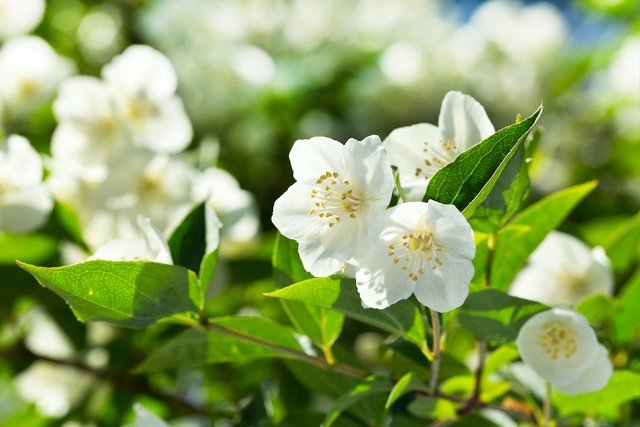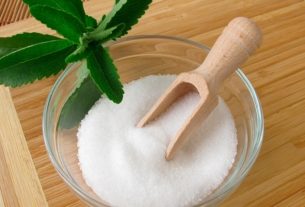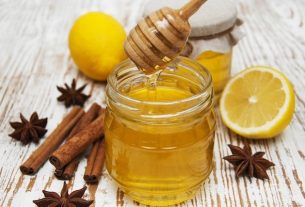Jasmine, also known as yellow jasmine, white jasmine, Chinese jasmine or jasmine, is a medicinal plant rich in flavonoids, alkaloids and polyphenols, which give it antioxidant, antiseptic and calming properties, and are therefore very used in traditional medicine as a home remedy to reduce stress, relieve headaches or help with wound healing.
The scientific name of this plant is Jasmine officinalisand the part normally used is its flowers or essential oil, for preparing tea, massage or to aromatize the environment, for example.
Jasmine can be found in herbalists or health food stores, and should be used under the guidance of a doctor or other healthcare professional who has experience with the use of medicinal plants.

What is it for
Jasmine has aphrodisiac, antiseptic, calming, emollient, rejuvenating, relaxing and invigorating properties, and is normally indicated for:
- Help you relax;
- Reduce stress;
- Combat insomnia or difficulty sleeping;
- Stimulate sexual desire;
- Relieve headache or muscle pain;
- Heal wounds;
- Combat skin aging;
- Relieve PMS symptoms, such as irritability or colic;
- Relieve cold and flu symptoms.
Furthermore, jasmine essential oil has a sweet and floral fragrance, with a calming and sedative effect, and is widely used in aromatherapy to help treat depression or anxiety.
Although jasmine has health benefits, this plant should not replace any medical treatment or be used without guidance from a doctor or healthcare professional with experience in the use of medicinal plants.
How to use
The parts of jasmine used are its flowers and essential oil, which are used to prepare tea, or for inhalation, massage or aromatherapy.
1. Jasmine tea
Jasmine tea must be prepared with its fresh flowers, from which substances with medicinal properties are extracted, and can be used to relax or calm down, and combat stress, depression, anxiety, insomnia or difficulty sleeping.
Ingredients
- 4 to 6 fresh jasmine flowers;
- 300 mL of boiling water.
Preparation mode
Add the fresh jasmine flowers to the boiling water and let it rest for about 5 minutes. Strain, wait for it to cool and drink 2 or 3 cups a day.
This tea can also be prepared using 1 jasmine tea bag in 1 cup of boiling water, letting it rest for 10 minutes and then drinking warm.
2. Aromatherapy with jasmine
Aromatherapy is a technique that uses the aroma and particles released by essential oils to stimulate different parts of the brain. In the case of jasmine essential oil, aromatherapy can help alleviate symptoms of anxiety, emotional tension or depression, as it has calming and sedative properties.
To perform aromatherapy with jasmine, you must deeply inhale the aroma of the essential oil directly from the bottle, holding the air in your lungs for about 2 to 3 seconds, before exhaling. Repeat inhalation 3 to 7 times, several times a day.
Another way to perform aromatherapy with jasmine essential oil is to place 2 to 3 drops of jasmine essential oil in a little water, inside an electric air freshener or in a room diffuser. The amount of water used varies according to the capacity of the electric air freshener or diffuser. The cloud of smoke or vapor formed allows the aroma to be released throughout the room.
Another more economical solution to using the aromatizer is to place drops of jasmine essential oil in a cup of boiling water, for example, because as the water evaporates, the aroma is released into the air.
3. Jasmine massage
Jasmine essential oil can also be used in relaxing massages due to its pleasant aroma and relaxing and aphrodisiac properties. See other benefits of massage with essential oils.
To perform the massage, you should use 10 to 20 drops of jasmine essential oil mixed with 50 mL of a vegetable oil, such as coconut oil or sweet almond oil, for example. Then, apply to the skin, massaging gently with your fingertips, for about 10 minutes.
Before using jasmine essential oil, an allergy test must be carried out, preparing a mixture containing 1 drop of jasmine essential oil in 1 teaspoon of carrier oil, and applying it to the back of the hand or the crease. of the elbow. Wait 24 hours and, if during this period the skin becomes red or irritated, it is not recommended to use jasmine essential oil.
Possible side effects
The side effects of jasmine are not yet fully known, but irritation or allergies may occur when the essential oil is applied to the skin.
Therefore, the use of jasmine should only be done with medical advice or from a healthcare professional with experience in medicinal plants.
Who shouldn’t use
Jasmine should not be used during pregnancy or breastfeeding.
Furthermore, jasmine essential oil should not be used by people with allergies or skin diseases.

Sign up for our newsletter and stay up to date with exclusive news
that can transform your routine!
Warning: Undefined array key "title" in /home/storelat/public_html/wp-content/plugins/link-whisper-premium/templates/frontend/related-posts.php on line 12
Warning: Undefined array key "title_tag" in /home/storelat/public_html/wp-content/plugins/link-whisper-premium/templates/frontend/related-posts.php on line 13



